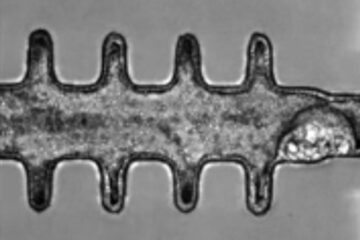New study shows continued decline in the last remaining stronghold for leatherback sea turtles

Researchers from the State University of Papua Indonesia, NOAA Fisheries Service, University of Alabama at Birmingham and World Wildlife Fund Indonesia released a report today documenting the continued decline of leatherback sea turtle nesting in the western Pacific Ocean.
“At least 75 percent of all Leatherback turtles in the western Pacific Ocean hatch from eggs laid on a few beaches in an area known as Bird's Head Peninsula in Papua Barat-Indonesia,” said Peter Dutton of NOAA's Southwest Fisheries Science Center and one of the researchers who co-authored the paper. “Our analysis indicates the number of leatherback turtle nests on this beach has declined 78 percent over the last 27 years.”
Leatherbacks are the largest of all marine turtles and the largest living reptile in the world weighing up to 2000 pounds and over six feet in length. Female leatherbacks lay clutches of approximately 100 eggs and typically nest several times during a nesting season. After about two months, the hatchlings emerge from the nest and enter the ocean where they mature and may migrate as far away as California to feed on jellyfish; a distance of about 6,000 miles.
Scientists believe there are a number of reasons why the leatherback turtle populations have continued to decline over the past three decades. Extensive harvesting of eggs, predation of nests by feral pigs and other predators, and the accidental capture in commercial fisheries are the primary factors involved.
Ricardo Tapilatu, lead author on the Ecosphere paper, and co-authors Manjula Tiwari and Dutton, began assessing and developing a nesting beach census and management plan over a decade ago as part of an international partnership to halt the species decline.
“The turtles nesting at Papua Barat, Papua New Guinea, and other islands in our region depend on food resources in waters managed by many other nations for their survival,” said Tapilatu. “It is important to protect leatherbacks in these foraging areas so that our nesting beach conservation efforts can be effective”.
“The international effort has attempted to develop a science-based nesting beach management plan by evaluating and addressing the factors that affect hatching success such as high sand temperatures, erosion, feral pig predation, and relocating nests to maximize hatchling output,” said Manjula Tiwari, a researcher at NOAA's Southwest Fisheries Science Center, in La Jolla, California.
The conservation value of nesting beach protection has also been recognized by groups like the International Seafood Sustainability Foundation (ISSF) that have raised funds from industry-affiliated members including tuna canners and processors, to help support UNIPA's nest protection program with the local communities on Bird's Head Peninsula.
“NOAA Fisheries Service is committed to doing our part in the international effort to recover the leatherback turtle through advancing science, implementing our recovery plans and management efforts such as the establishment of critical habitat off California,” said Cisco Werner, Director of the Southwest Fisheries Science Center. “Reducing threats on the nesting beaches and at leatherback foraging areas will require continued international cooperation and action if we hope to save Pacific leatherbacks from extinction.”
Article available here: http://www.esajournals.org/doi/pdf/10.1890/ES12-00348.1
Media Contact
More Information:
http://www.noaa.govAll latest news from the category: Ecology, The Environment and Conservation
This complex theme deals primarily with interactions between organisms and the environmental factors that impact them, but to a greater extent between individual inanimate environmental factors.
innovations-report offers informative reports and articles on topics such as climate protection, landscape conservation, ecological systems, wildlife and nature parks and ecosystem efficiency and balance.
Newest articles

Solving the riddle of the sphingolipids in coronary artery disease
Weill Cornell Medicine investigators have uncovered a way to unleash in blood vessels the protective effects of a type of fat-related molecule known as a sphingolipid, suggesting a promising new…

Rocks with the oldest evidence yet of Earth’s magnetic field
The 3.7 billion-year-old rocks may extend the magnetic field’s age by 200 million years. Geologists at MIT and Oxford University have uncovered ancient rocks in Greenland that bear the oldest…

Mini-colons revolutionize colorectal cancer research
As our battle against cancer rages on, the quest for more sophisticated and realistic models to study tumor development has never been more critical. Until now, research has relied on…





















